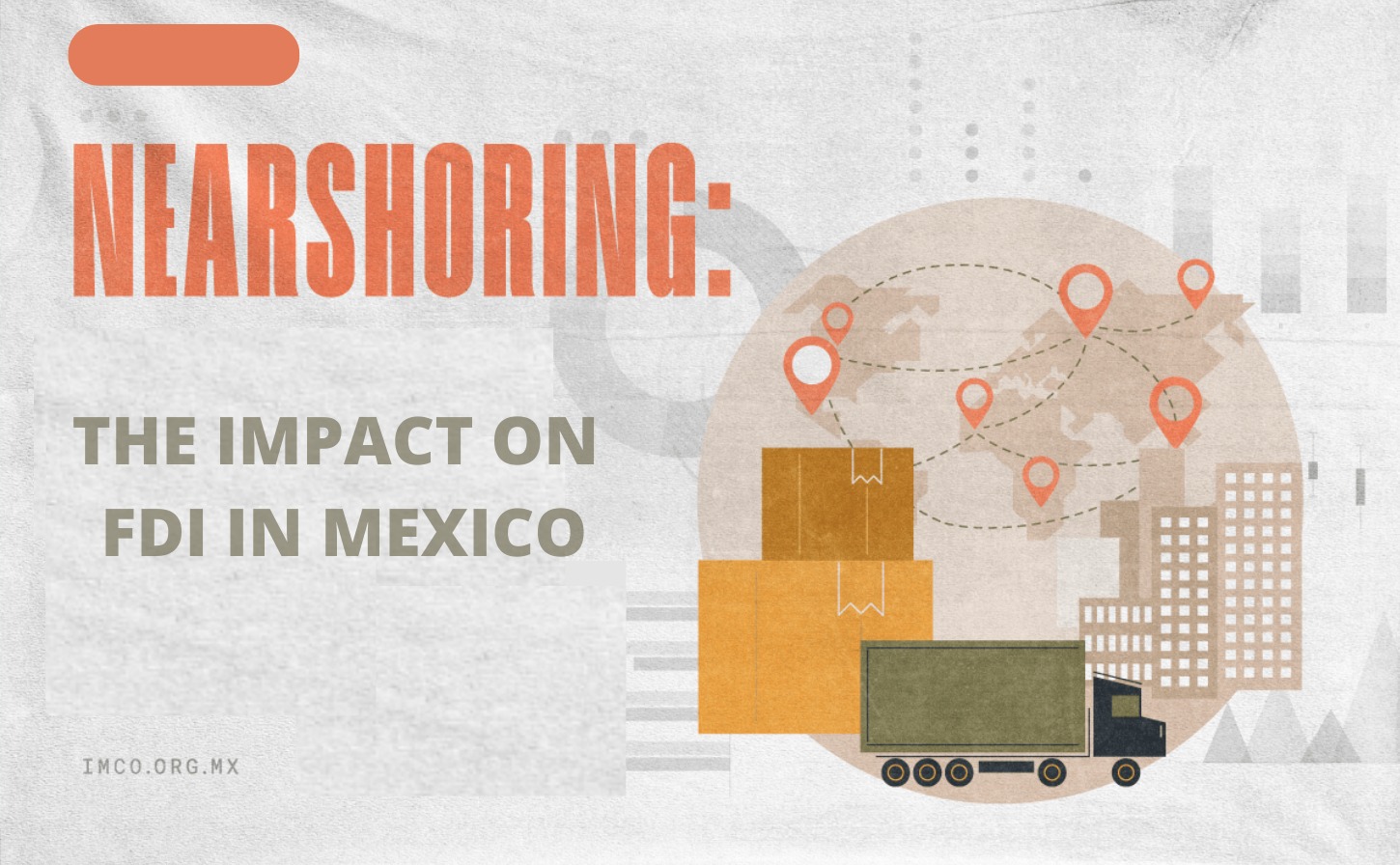
Foreign Direct Investment (FDI) related to the relocation of productive chains in Mexico during the first nine months of 2023 grew by 47% compared to the same period in 2022. In contrast, FDI, unrelated to that trend, decreased by (-)27% during the same period.
In face of an adverse and uncertain international context, given disruptions in global supply chains, geopolitical tensions, and volatility in the global economy, the strategy of relocating essential productive chains to nearby countries with strong alliances -nearshoring- gained momentum in Mexico and North America. This, as means to achieve greater resilience. However, a couple of years after this phenomenon gained momentum, there is no clear path to measure its impacts.
Aguascalientes, Nuevo León, and Mexico City have been the most successful states in terms of attracting foreign investment due to nearshoring. Conversely, Oaxaca, Veracruz, and Jalisco currently are not taking advantage of this phenomenon.
Furthermore, Mexico could do more to capitalize on nearshoring. While there was a 12% increase in FDI during 2022, other countries like Brazil and Chile increased their investment flows by more than 50%.
Therefore, to identify the changes triggered by nearshoring in the Mexican economy, the Mexican Institute for Competitiveness (IMCO), in collaboration with the Friedrich Naumann Foundation, analyzed FDI flows for 57 industrial activities, whose investment reception may be more associated with the relocation trend, as opposed to investment captured by other sectors. The results show that nearshoring is driving investment into the country, although not in a homogenous way across states.
Impact of nearshoring in Mexico
During the first nine months of 2023, FDI in the 57 sectors most related to nearshoring -including activities such as automobile and truck manufacturing, pharmaceuticals, and beverages- grew at an annual rate of 47%, increasing from $10.5 billion between January and September 2022 to $15 billion during the same period of 2023. In contrast, FDI unrelated to this phenomenon declined by 27% during the same period, registering just over $17 billion.
The increase in FDI inflows related to nearshoring has not been homogeneous across all states. It is more noticeable where FDI is already concentrated or in states that have structural conditions conducive to attracting investment. Foremost among them are:
- Aguascalientes, whose FDI related to the supply chain relocation grew more than in other sectors. During the first nine months of 2023, FDI related to nearshoring increased 310% compared to the same period of 2022, driving the state’s FDI growth during that period.
- In Mexico City and Nuevo León, total FDI received during the last year declined. Nonetheless, sectors related to nearshoring performed better, growing 27% and 265%, respectively.
- Conversely, in Veracruz and Oaxaca, there has been little momentum in investment directed towards sectors related to the relocation phenomenon. This is due to the structural conditions that reduce their competitiveness and create obstacles for investment.
Although Mexico as a whole has registered increases in FDI inflows, its performance lags behind compared to other major FDI-receiving countries. In 2022, Mexico ranked 11th on the world’s top FDI recipients. However, it has not been among the countries with the highest FDI growth rates.
To make the most of the relocalization of value chains, depending on the country’s current features to attract investment from transnational companies is not enough. Mexico must be proactive and implement public policies to increase competitiveness and become a more attractive country to investors seeking to relocate production chains.
To create the proper conditions to attract investment and make use of the opportunities that nearshoring offers, IMCO suggests:
Public investment in infrastructure to close regional gaps. The great disparities among states in terms of their economic and social conditions affect their capacity to attract more investment and talent—whether directly or indirectly linked to nearshoring. For that reason, the structural needs of each state must be identified and addressed. Such needs will include pending issues in the maintenance, modernization and spread of the necessary networks and infrastructure to supply basic inputs like water and electricity. Other structural aspects that must be addressed are the construction of adequate housing for workers and the creation of public transportation routes to improve connection between work locations.
At-work training to participate in high value added activities. The extent to which Mexican states manage to attract investment partially depends on the extent to which states can produce, attract and retain human talent. Having available workers with the necessary education skills to fill the positions created by new investments and able to adapt to changes in production and technology processes (not only four-year college programs, but also two-year vocational or training programs and professional certifications), is essential to participate in high added value industries and produce higher incomes.
Adoption of technologies to modernize the manufacturing industry. To better integrate into the North America region and participate in more production chains, Mexico must adapt to advanced and automated manufacturing, which requires the incorporation of new technology such as digital tools, to transform national production systems based on innovation and technological development.
Ensuring rule of law. In addition to physical and human resources, it is imperative to create a more suitable environment for business in the country. Law enforcement and a judiciary system that can provide certainty are also decisive aspects for both national and international investors; since they support their operation and reduce costs. Simplifying regulations to carry out production activities, as well as allocating adequate resources to governmental justice units, are important related areas in need of improvement.
